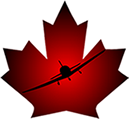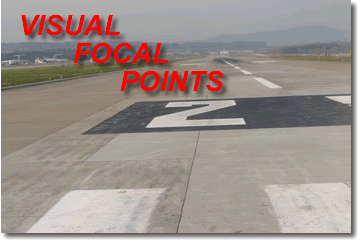 |
|
“Fix
your eyes on perfection and you make almost everything speed towards it.”
Where we look, where we focus our attention when flying, is in many ways a more positive indicator of how we will perform than what we are thinking. What we think directs where our mind goes; where we look is where the aircraft goes. Taxiing, turns, and slips are all excellent examples of manoeuvres illustrating the relationship between visual focus and performance. A moment’s thought will suggest many more. When taxiing an aircraft we must learn to coordinate feet, hands and eyes to keep the machine tracking and manoeuvring as required. Particularly during the early stages of training, it is critical to form a connection between eyes and feet if we are to keep the machine anywhere near the centreline of the taxiway. We need to find a focal point for our eyes to achieve the required taxi pathway. Many people have little or no experience controlling things with their feet so the initial learning process can be comical at times. I know mine was. The big exception, as most flight instructors will tell you, is those people who have operated tracked vehicles: they have developed excellent eye-foot coordination. Soccer players, as well, tend to find use of rudder pedals coordinated with eye focus much easier than the average person. Just as with driving a car, if we set our focal point too close to the front of the aircraft we will find ourselves overcorrecting, swerving right and left down the taxiway. I like to tell students to track ahead on the taxiway line, if there is one, and find the point ahead along the line where motion ceases. Too close and the line appears to be moving. We need to find the “still” point and keep our eyes focused there. When learning turns where we focus our eyes is very important if we want to achieve success. Many young pilots and students pilots have spent hours and hours in front of their computer playing with a flight simulator. Instruments are very familiar to them and very comforting. When flying VFR, however, we do not want to have our eyes focused inside the cockpit on the instrument panel. We do want to be in direct visual contact with the surface, the horizon and the airspace surrounding our aircraft. Once again, where our eyes go is where the aircraft goes. If we are looking down at the instruments while performing a turn to the left, for example, typically the aircraft will dive to the left as it turns; as we turn to the right, typically, the aircraft will climb as it turns. Our eyes are not providing our muscles with appropriate information. To enter a turn, conduct a good lookout to insure you are safe to manoeuvre, focus your eyes on the horizon about 30º ahead of the nose in the direction of the turn and guide the aircraft through the turn. It’s a very similar act to shooting a moving target: you must project where the target will be and lead the target with your eyes. The aircraft will naturally follow where you look once the connections have been established between your eyes and your muscles. Many instructors will help students focus outside during turns by leaning over and covering the instruments. It’s quite amazing to see how much better a student will typically perform once he or she gets over the burst of irritation resulting from the “taking away” of their normal input source. Slips are a particularly useful manoeuvre, but can be very disorienting, particularly in the early stages of training. Even many experienced pilots will hesitate to slip an aircraft if they can find another solution. Done correctly, however, slipping is a very elegant and delightful manoeuvre and very useful in particular situations. Set yourself up to enter a slip by establishing the aircraft in a power off glide. Note the aircraft’s attitude in relation to the horizon and pick a stationary object or point on the ground ahead along your flight path. Preferably, pick something at about the point you would touch down if the glide continued or slightly beyond. Roll the aircraft into a bank; stop the turn with rudder. Keep your eyes on the focal point during the entire manoeuvre and allow the aircraft to fly toward it. Or rather allow yourself to fly toward it and bring the aircraft with you. You can easily judge whether to add or reduce aileron input and whether or not your pitch attitude must be adjusted because you have a fixed point of reference. To recover, reduce rudder and aileron inputs to neutral simultaneously while keeping your eyes on the same focal point. Disorientation is eliminated and, if anyone happens to be watching, they will surely say, “What a pretty job that fellow did.” If we want to execute a slipping turn, we simply apply the same technique we used in a level turn: project our path, lead with our focal point and guide the aircraft with our eyes. Paying attention to where we look when we fly, particularly when we manoeuvre the machine, can be invaluable in improving our performance. If you’re not certain where you have been looking, remind yourself to notice. We can all find ways to improve our piloting skills. Enjoy. |



